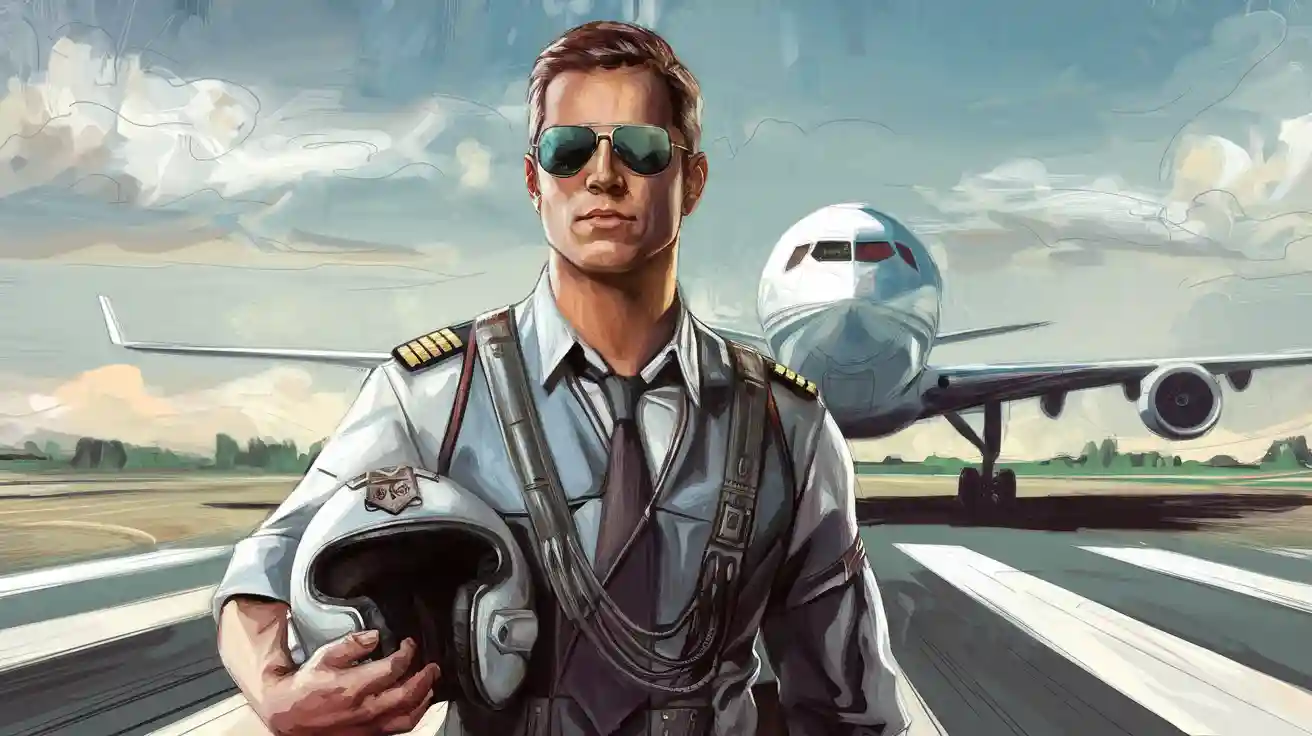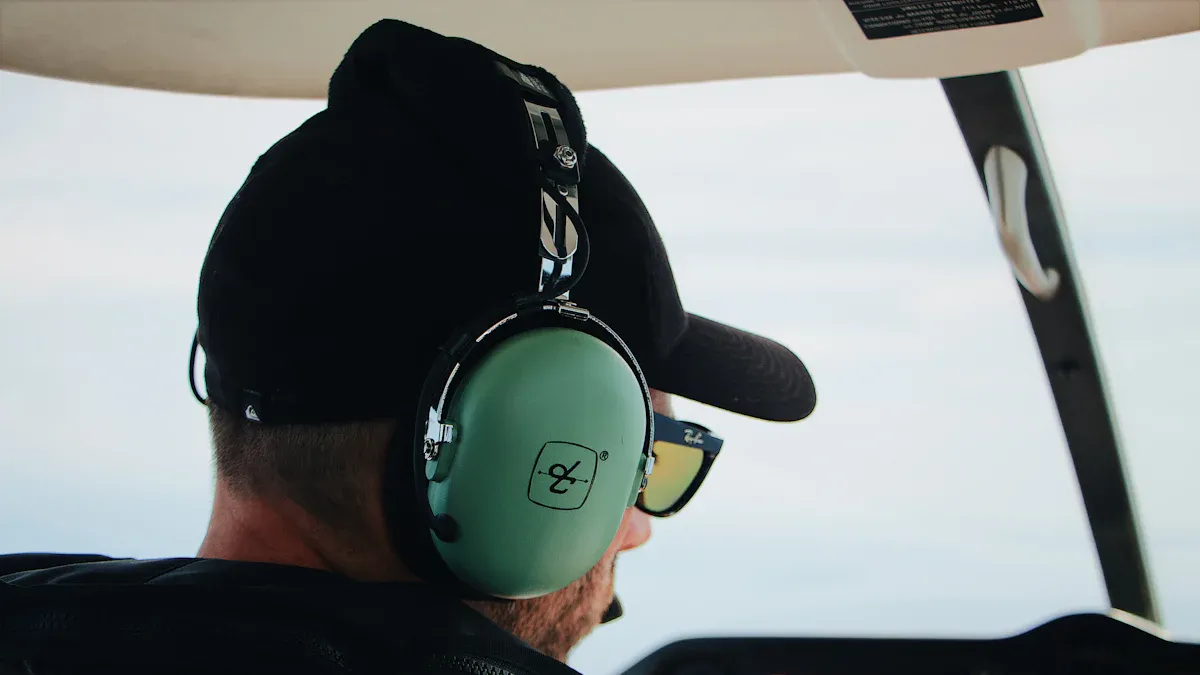
Many people who want to be pilots ask, "Can pilots wear glasses?" The answer is yes! Pilots can wear glasses and still follow their dreams if they meet the basic vision rules for flying. Today’s rules allow pilots to use glasses or contact lenses to fix their vision.
Many pilots with glasses or steady eye conditions, like after cataract surgery, keep flying without problems.
If your vision condition is stable, you might get a waiver, which helps meet the rules more easily.
For example, you need to see at least 6/9 with each eye and 6/6 when using both eyes together. Glasses or contacts can fix vision issues within certain limits to meet these rules. So, if you want to be a pilot, wearing glasses won’t stop you!
Key Takeaways
Pilots can wear glasses or contacts to see clearly. This helps many people follow their dream of flying.
The FAA says pilots need 20/20 vision to get certified. Glasses or contacts can help meet this rule.
Seeing colors and judging distances are very important for flying. Pilots take tests to show they can do these things.
Picking good glasses is key for pilots. Light frames and anti-glare lenses make flying safer and more comfortable.
Eye checkups and healthy habits keep vision strong. This helps pilots stay safe while flying.
General Pilot Vision Requirements
The 20/20 Vision Standard Explained
Pilots need good vision to meet flying rules. The 20/20 standard means seeing clearly at 20 feet, like most people. This helps pilots read instruments, spot landmarks, and avoid dangers. If your vision isn’t perfect, glasses or contacts can fix it.
The FAA requires pilots to have 20/20 distance vision for certification. For close-up tasks, vision must be 20/40 at 16 inches. Pilots over 50 need 20/40 vision at 32 inches. These rules ensure pilots can read charts and use controls well.
Acuity |
|
|---|---|
50 M |
1/50 |
20/1000 |
1/1 |
20/20 |
1/1 |
New tools like the PEEK acuity app make vision tests easier. Studies show this app works as well as older methods. It has a strong accuracy score of 0.7. This technology helps ensure pilots meet vision standards reliably.
Importance of Depth Perception for Pilots
Depth perception is key for safe flying. It helps pilots judge distances for landing, avoiding obstacles, and staying clear of other planes. Without it, safety could be at risk.
Pilots must show good depth perception during medical checks. This proves they can handle tricky maneuvers in 3D space. Glasses can help if natural depth perception isn’t strong enough.
Role of Color Vision in Meeting Pilot Vision Requirements
Color vision is also important for pilots. It helps them read signals, cockpit displays, and navigation lights. For example, red and green wing lights show plane direction at night.
The FAA tests color vision during medical exams. These tests ensure pilots can see colors correctly for safe flying. If you have trouble with color vision, other tests might still let you qualify to fly.
Differences in Vision Standards for Commercial and Military Pilots
Commercial Pilot Vision Requirements
Commercial pilots must follow strict vision rules for safe flying. These rules check eyesight sharpness, color vision, and eye health. Groups like the FAA and ICAO set these standards.
Vision Requirement |
Criteria |
|---|---|
Visual Acuity |
|
Glaucoma |
Allowed if test results meet safety limits |
Cataract Surgery |
Can fly after recovery and meeting conditions |
Color Vision |
Must see key colors for safe flying tasks |
A medical exam confirms if your vision meets these rules. For example, after cataract surgery, you can fly once recovery is complete. Color vision tests, like the Ishihara test, check if you can see red, green, and yellow. These tests ensure you can read cockpit screens and see navigation lights.
Military Pilot Vision Requirements
Military pilots need better vision than commercial pilots. You must have almost perfect eyesight without glasses. For instance, the U.S. Air Force needs 20/70 vision or better without correction. Corrected vision must be 20/20.
Depth perception and color vision are very important for military pilots. You need strong depth perception to handle fast moves and land on carriers. Color vision tests make sure you can see signals and warning lights during missions.
If you wear glasses, some roles may still be open to you. Laser eye surgery is often suggested to meet tougher rules. A detailed medical check will confirm if you qualify.
Why Military Standards Are Stricter
Military pilots work in tougher conditions than commercial pilots. You may fly fast, in combat, or during bad weather. These situations need excellent vision for safety and success.
Military flying has unique challenges. For example, you might land on a moving carrier or fly in enemy zones. These tasks need sharp depth perception and quick thinking.
Military medical exams are stricter to prepare pilots for these demands. While commercial pilots focus on passenger safety, military pilots also protect national security. This explains why military vision rules are harder to meet.
Practical Tips for Aspiring Pilots with Glasses

Picking the Best Glasses for Pilots
Choosing good glasses is important for pilots. Your glasses should help you see clearly and feel comfortable. Lightweight frames that fit well can prevent distractions. Anti-glare coatings reduce reflections from sunlight and cockpit screens, making flying safer.
Special glasses made for pilots can improve your experience. Some examples are:
GlareShields from NoIR: Reduces glare, designed with helicopter pilots in mind.
Laser Armor Aviator Glasses from Night Flight: Made for civil aviation needs.
metaAIR eyewear from Metamaterial Technologies Inc.: Uses special tech to block laser light and balance colors.
LaseReflect Aviator from Iridian Spectral Technologies: Blocks green and infrared light.
Flash Fighters from Kentek: Protects with dye-based lenses in metal frames.
Laser-Gard from Sperian: Shields against green laser pointers at night.
The right glasses help you meet vision rules and stay safe while flying.
Keeping Your Eyes Healthy for Flying
Healthy eyes are needed to meet pilot vision rules. Get regular eye checkups to catch problems early. Eat foods like carrots and oranges for vitamins A and C, which help your eyes. Drink water to avoid dry eyes during long flights.
New tools like VR eye tests make checkups faster and easier. These tests take about 6 minutes, much quicker than older methods. They also give accurate results to keep your vision in great shape.
Rest your eyes by taking breaks from screens and using good lighting. These habits protect your vision for flying.
Getting Ready for Vision Tests as a Pilot
Vision tests are important for pilots who wear glasses. Practice reading letters from different distances to prepare. Make sure your glasses prescription is current before the test.
Stay calm and focus during the test. Tell the examiner if you wear glasses. They will check your vision with and without them to see if you meet the rules.
Eye exams also test depth perception and color vision. These tests show if you can judge distances and see signals correctly. Preparing well helps you feel confident and pass the tests.
Wearing glasses won’t stop you from being a pilot. Glasses or contacts help your vision meet flying rules. Studies prove pilots can meet vision needs with corrections like LASIK.
Military pilots need 20/20 vision with glasses or contacts.
Commercial pilots must follow FAA rules for 20/20 vision.
Both types of pilots can use glasses or surgery to qualify.
If you love flying, don’t let glasses hold you back. Stay focused, take the right steps, and you can safely fly with glasses.
FAQ
Can you become a pilot if you wear glasses?
Yes, you can! Glasses or contacts help fix your vision. If your corrected eyesight meets the rules, you can fly. Many pilots wear glasses without problems.
Do pilots need perfect vision to fly?
No, perfect vision isn’t required. Glasses can correct your eyesight. The FAA allows 20/20 vision with glasses or contacts. You just need to pass medical checks.
Are there specific glasses designed for pilots?
Yes, special glasses are made for pilots. They have anti-glare coatings and light frames for comfort. Some block laser light or reduce reflections to improve safety.
Can pilots undergo LASIK surgery to meet vision standards?
Yes, LASIK surgery is an option for pilots. After healing, you must pass a medical test. This confirms your vision meets flying rules.
How often do pilots need vision tests?
Pilots take vision tests during regular medical exams. The timing depends on age and certification. Pilots under 40 test yearly; over 40 test every six months.







